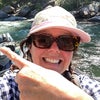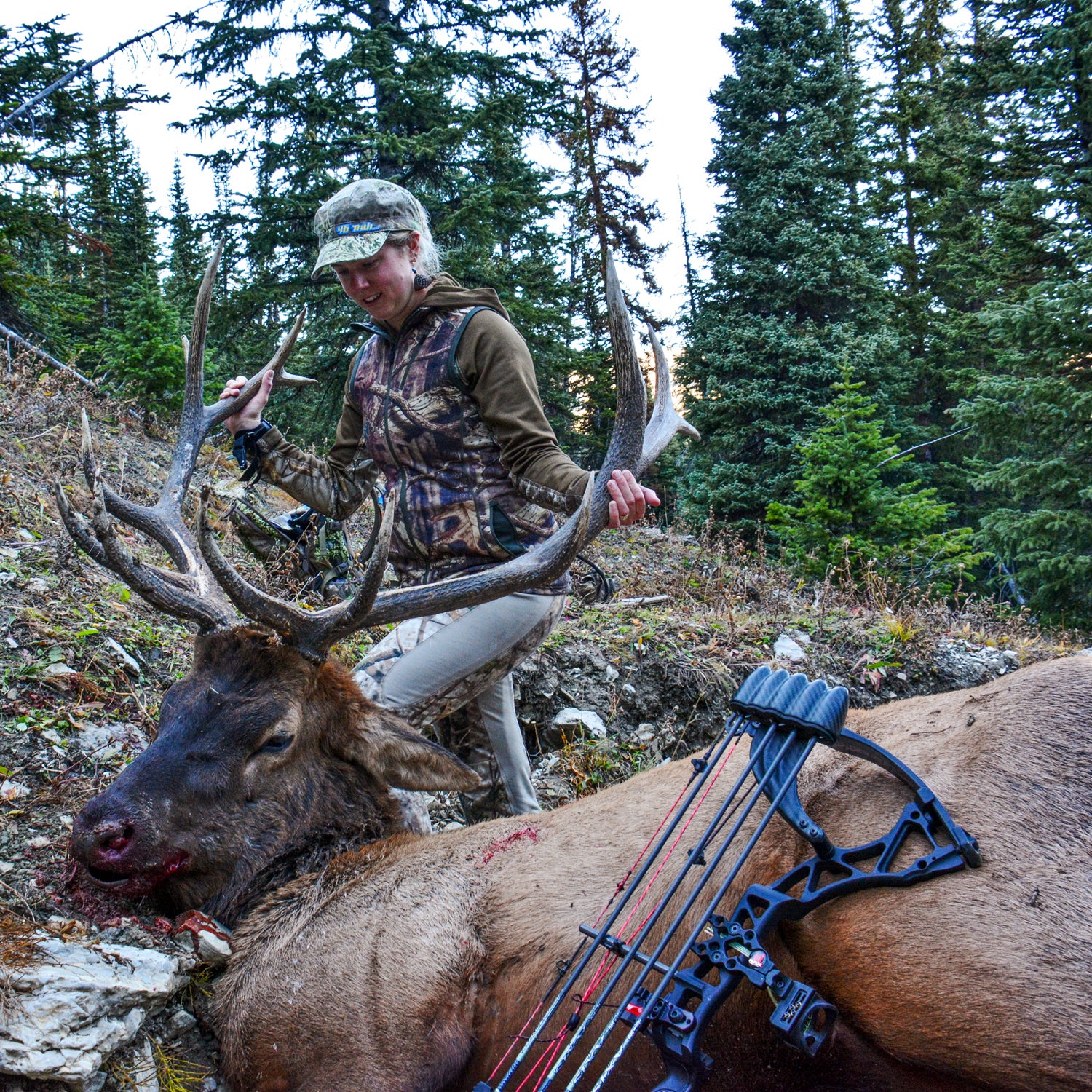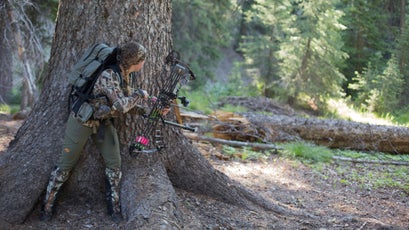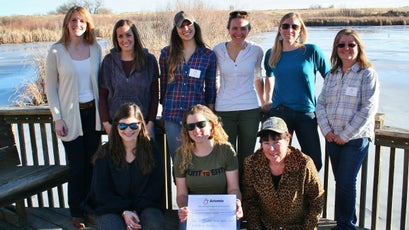On a snowy night in 2014, 25-year-old Jessi Johnson made good on two years of dedicated practice with her bow and fired an arrow into a 175-pound buck with a three-point-four rack. She remembers none of the exhaustion associated with field dressing, just the elation of bringing sustenance to her friends and family. Then came an epiphany: If public lands are sold off to private landowners, her entire experience would be lost to future generations.
Johnson is one of a rapidly growing demographic: female hunters and anglers. In fact, they’ve become so numerous and well connected that they’ve recently formed a women-specific lobbying group aimed at uniting recreationists to save the lands where they hunt and fish.
Strong, female public lands advocates are needed now more than ever. Hunters and anglers contribute hugely to conservation through excise taxes from hunting- and fishing-related purchases.
Johnson had never seen a place for herself as a conservationist, though she comes from a family of them. She grew up the child of conservationists who managed some of the famous ranches throughout the West, like the Craighead Ranch near Missoula, Montana, linked to architect John Craighead, and the Levi Strauss Ranch, on California’s McCloud River, where citizens blocked Nestlé Water from snagging 100-year unlimited extraction rights. Fueled by her newly confirmed passion for hunting, Johnson let her parents’ ethic guide her next steps.
After that first hunting season, Johnson threw herself into volunteering for organizations like , which works to protect North American public lands and waters. By the summer of 2016, she’d been hired on by , which does similar work. In October 2016, Aaron Kindle, senior manager for western sporting campaigns at the (NWF), contacted Johnson with an even bigger idea. How would she like to bring women hunters and anglers to the forefront of the conservation fight?
Conservation needs as many advocates as possible, and women have been making inroads into leadership positions. They head organizations such as Outdoor Afro, River Network, and the Outdoor Industry Association, but until now, only one conservation-focused group has been all female: the 28-year-old . There’s value in creating more groups that unify women specifically. “As we face attacks on public lands and and wildlife, we want to make sure we have most powerful voices, in both gender and region, across the country,” says Collin O’Mara, president and CEO of the NWF.
Kindle and others see women hunters as a powerful but untapped demographic. Hunters and anglers already contribute hugely to conservation through excise taxes from hunting- and fishing-related purchases, to the tune of $1.1 billion in 2016. Women hunters as a demographic grew 85 percent between 2001 and 2013, from 1.8 to 3.3 million. Today, 20-plus percent of all U.S. hunters are women. “Women hunters have been doing great stuff in the conservation movement yet haven’t received the attention they deserve,” says Kindle. “We had to get them out in front at this crucial time for public lands.”
Johnson lined up nine “dyed-in-the-wool sportswomen,” all working on conservation, says Kindle. They live in Wyoming, Montana, Idaho, New Mexico, Colorado, and South Dakota and include firearms enthusiasts, a retired department of fish and game employee, community organizers, communications specialists, and biologists, all ranging in age from 24 to 52. Their goal would be to educate and lobby for the protection of public lands, to protect mule deer and cutthroat trout, and to build leadership among sportswomen that breaks stereotypes and brings in new voices.
They named the group , after the Greek goddess of the hunt, childbirth, the moon, wilderness, wild animals, and archery. “We felt she was the perfect analogy for what we wanted to do, which was create a new story about hunting and angling,” says Johnson. “We didn’t want to put down the man’s voice, but male hunters have some bad raps and bad reps. Artemis wants to bridge the gap between hunter conservationists and all conservationists.”
The ten founding members of Artemis gathered for the first time in April 2017. The NWF funded a fly-in weekend for them two days later in Washington, D.C. They’d divide up based on their home states and introduce themselves to their representatives.
Their goal would be to educate and lobby for the protection of public lands, to protect mule deer and cutthroat trout, and to build leadership among sportswomen that breaks stereotypes and brings in new voices.
Johnson and company were accustomed to being “the one woman” in a room full of sportsmen; now, five of them were visiting up to 15 different senators and members of Congress. Johnson met with senators from her home state of Wyoming, Mike Enzi (R) and John Barrasso (R), and, she says, her discussion with Barrasso was challenging. “I sat in front of him. He called me darlin’. Yet when I told [him and other leaders] what we do and how we were formed, their eyebrows went up. When we showed them, ‘We’re going to hold you accountable for the decisions you make,’ they went, ‘Here’s someone I need to listen to.’” By day two, “Montana senator Steve Daines knew who we were without us having to say. It was like, whoa, this thing has legs.”
Back in June, Artemis went to an Idaho Wildlife Federation ale fest. Some 400 people attended, and a line formed in front of their table. “Women were signing up on the spot. Guys were grabbing their girlfriends and telling them to sign up,” says Johnson. Now the group is planning more events and political actions and plans to partner with some powerful but as-yet undisclosed entities, says Artemis member Kara Armano. Susan Kearns, of the Great Old Broads, wants to build an alliance. She says women bring a unique way of working within a given system. “They’re collaborative,” says Kearns. “They’re good at finding common ground. If one door closes, they look for another door, rather than beating it down.”
Johnson hopes that Artemis can play a part in protecting America’s 640 million acres of public lands. And protection is possible, she adds. “Look at Teton County. It’s 98 percent public land. Without protection, we could have lost the longest pronghorn migration route we know of.”
Artemis is also busting stereotypes. “For years, hunting media has been fixated on what I call sexpot huntresses, a male fantasy role carved out for female hunters that involves spray-on tans, capped teeth, lots of mascara, camouflage bikini tops, and plenty of pink,” says Steven Rinella, host of the podcast and ���ϳԹ��� contributor. “It’s far from representative of the many female hunters that I’ve known throughout my life, who just want to be accepted as equals in the woods. What’s more, they have a lot to say about conservation and say it better than a lot of men do. Artemis gives female hunters a community where they can interact and take action to support a lifestyle that they love.”
Sara Pauley, director of the , sees Artemis as an entity that can create more space for women in the movement. “Research does bear out that women leaders tend to be more collaborative problem solvers, better communicators overall, and tend to have strength in building relationships,” she says. “In this day and age in conservation, with our constituency changing dramatically, we need as much diversity as we can get.”




